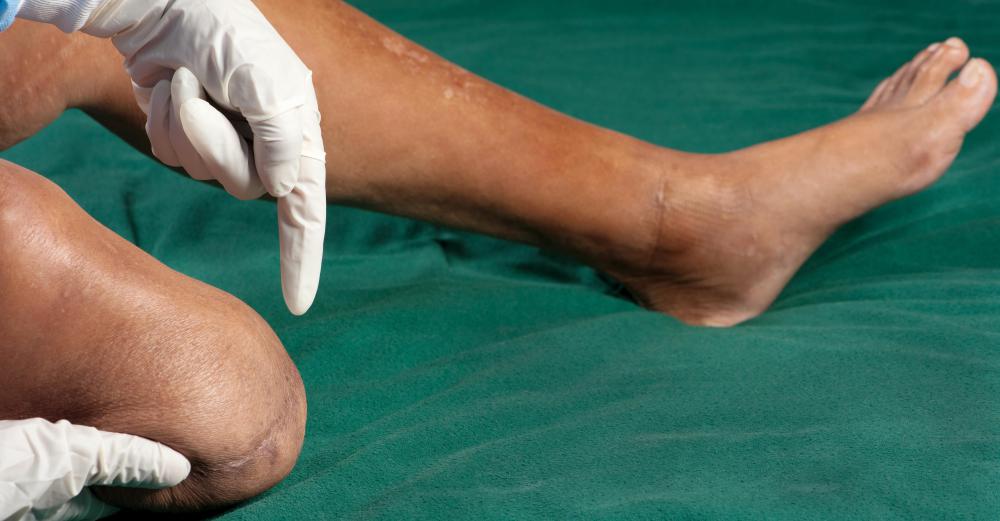At TheHealthBoard, we're committed to delivering accurate, trustworthy information. Our expert-authored content is rigorously fact-checked and sourced from credible authorities. Discover how we uphold the highest standards in providing you with reliable knowledge.
What is Fibrosarcoma?
A fibrosarcoma is a malignant tumor that is found on both soft tissue, such as joints or muscle tendons, and on bones. It usually begins in the fibrous tissue that surrounds the ends of bones in the arms or legs before spreading to other soft tissue in the body.
Scientists and doctors distinguish two common forms of the condition; infantile fibrosarcoma and adult form fibrosarcoma. Very young children, usually less a year old, are typically diagnosed with infantile fibrosarcoma. In these cases the tumor is typically found immediately after birth. Infantile fibrosarcomas are rarely life-threatening and can be treated with surgery to remove the tumor. Sometimes chemotherapy and other treatments are used in conjunction with surgical procedures on older children who are diagnosed with the condition. Fibrosarcoma in adults is far more serious. Five-year survival rates for advanced cases are less than 30%. When caught early, survival rates range from 50% to 80%.

Symptoms of a fibrosarcoma can seem relatively harmless. Typically, the only early symptom is a slight pain in the affected area. As the disease progresses, a noticeable lump or mass will become apparent. This is usually painless or at the most slightly tender. Once diagnosed, fibrosarcoma treatment can vary depending on the severity of the tumor. Surgery to remove the tumor is usually the first option. In the past, this usually meant the complete removal of the bone that was affected. Today, bone salvaging surgery is performed when possible, saving as much of it as needed while removing the fibrosarcoma cell. Surrounding tissue and bone that appears healthy is often removed as well as a preventative measure. If the salvaging surgery does not work, complete amputation may be needed. Common cancer treatments such as chemotherapy and radiation are often ineffective against fibrosarcoma cancer.

In addition to being a human ailment, cats and dogs can also contract fibrosarcomas. In these animals, the tumors are often found near injection sites where tissue was damaged, or in the paws. Oral fibrosarcomas are also common for both animals. Treatment for dogs and cats is the same as it is for humans, although usually a full amputation is performed to decrease the likelihood of the tumor resurfacing later. When it comes to facial or oral fibrosarcomas however, only chemotherapy and radiation treatment are options. Although these treatments are more successful in these animals than they are in humans, the process is usually very painful for the animal and expensive for its owner.
AS FEATURED ON:
AS FEATURED ON:

















Discuss this Article
Post your comments